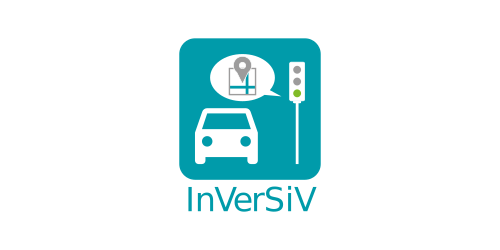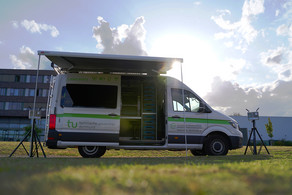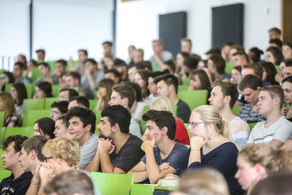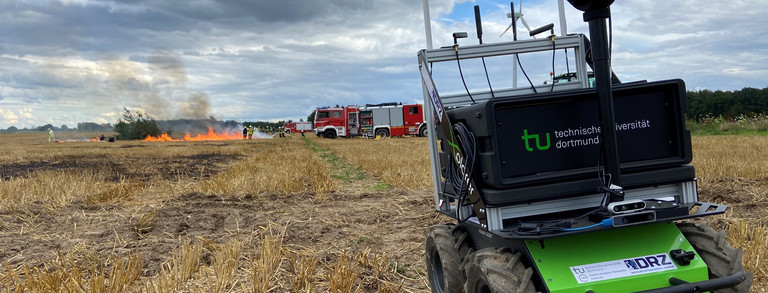InVerSiV
While the technologies for autonomous driving on highways are well advanced, the challanges for driving assistants, semi-autonomous and autonomous driving in the complex environment of inner cities are not. This challanges are addressed within the InVerSIV-project.
Project duration: 01.07.2016 - 30.06.2019
To solve the existing problems for autonomous cars in megacities a sensorfusion between the cars sensors and traffic infrastructure equipped with sensors to sense their environment is done. This enables a more detailed view of the environment compared to the cars own sensors and furthermore this data can be enriched with additional local or global knowledge.
By this project the complex scenario of megacities shall be controllable for autonomous cars and furthermore outside traffic participants that are not equipped with own sensors like pedestrian, cyclists or even older cars shall be protected, as possible risks are recognized early and appropriate counteractions can be applied.

Please confirm video activation.
After activation, cookies will be set and data is sent to YouTube (Google).
To the Google Privacy Policy
The InVerSiV project is funded by the federal state of Northrhine-Westphalia and the “European Regional Development Fund” (EFRE) 2014-2020 under grant number EFRE-0800422.


News
Four publications addressing recent topics in automotive communication networks presented at IEEE VTC-Fall 2019
Key results of the vehicular research projects "SFB 876 (B4): Analysis and Communication for Dynamic Traffic Prognosis" and "Intelligente…
InVerSiV project successfully concluded in final demonstration
Sensors for environment recognition help to minimize dangers for road users in semi-automated and highly automated driving in complex environments,…
5G-Initiative for Germany - TU Dortmund Is a Part of It
5G-Initiative for Germany - TU Dortmund is a part of it: The Federal Minister for Traffic and Digital Infrastructure has started an initiative, that…
Publications
Performance Analysis of C-V2X Mode 4 Communication Introducing an Open-Source C-V2X Simulator
F. Eckermann, M. Kahlert, C. Wietfeld
In 2019 IEEE 90th Vehicular Technology Conference (VTC-Fall), Honolulu, Hawaii, USA, September 2019.
Performance Analysis of Unsupervised LTE Device-to-Device (D2D) Communication
F. Eckermann, J. Freudenthal, C. Wietfeld,
In 2018 IEEE 88th IEEE Vehicular Technology Conference (VTC-Fall), Chicago, USA, August 2018.
tinyLTE: Lightweight, Ad Hoc Deployable Cellular Network for Vehicular Communication
F. Eckermann, P. Gorczak, C. Wietfeld,
In IEEE Vehicular Technology Conference (VTC-Spring), June 2018.





